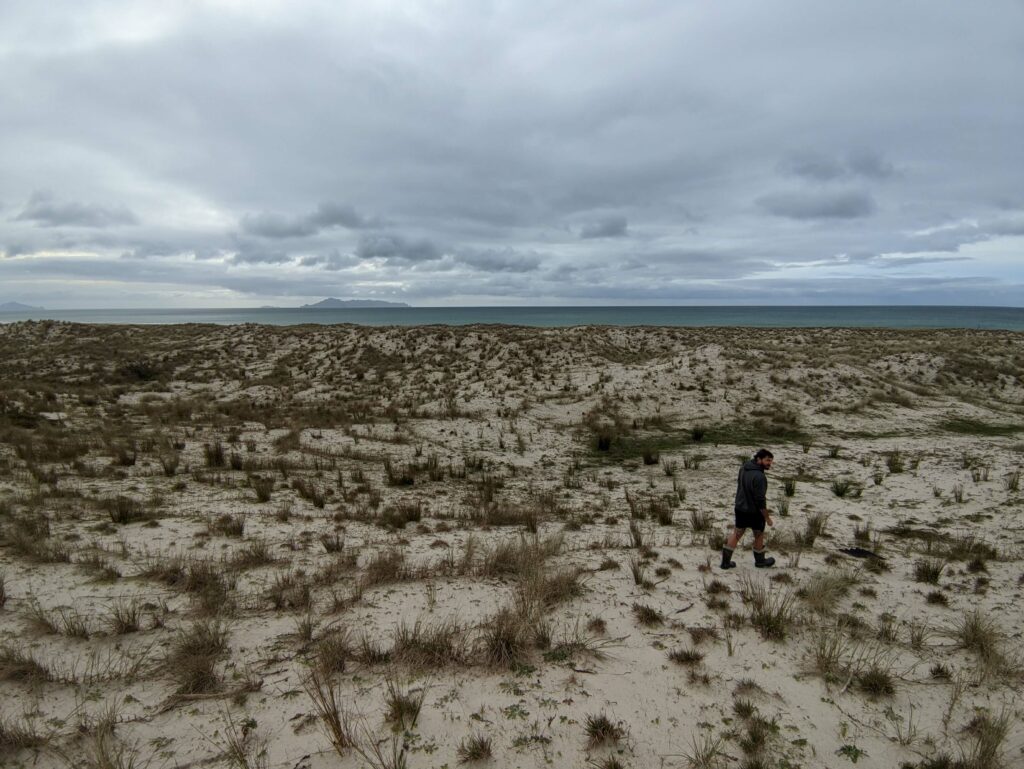For the better part of a decade, Rural Design has been extensively working on the revegetation and rehabilitation of the coastal dune lands at Tara Iti in hopes to reestablish a plant regime that is indicative of what was likely historically there prior to anthropogenic alterations. Doing so is no easy task, but in short it requires careful plant selection, intensive pest plant management, an encompassing exotic animal control plan, landscaping, and a whole lotta manual labour. These dune systems are incredibly sensitive ecosystems, and small things like using the wrong type of fertilizer or planting the wrong plant species can not only radically affect the long-term vision of the restoration goals, but also may have potential negative cascading effects to the wider ecological area.
Dune restoration is becoming increasingly important in the face of climate change – dunes not only provide an important buffer to erosion and storms (like we have recently seen), but also provide critical habitat for endemic fauna. Specifically, coastal backdunes like that out at Tara Iti are some of the rarest ecotypes in the region. Yet, after having been subjected to various land use and anthropogenic modifications over many years, it can be difficult to surmise what the ‘natural’ native ground cover once was. As you can imagine, pulling this off is no easy feat. So it begs the question; how do we know if we are doing it right? It’s not like we can hop in a time machine and check out what the area was like prior to human colonization. Lucky for us, the presence of endemic fauna which preferentially utilize these ecotypes provides a key indication that we are doing it right. If endemic skinks and spiders are making their homes in these newly revegetated areas, then we must be doing something right!
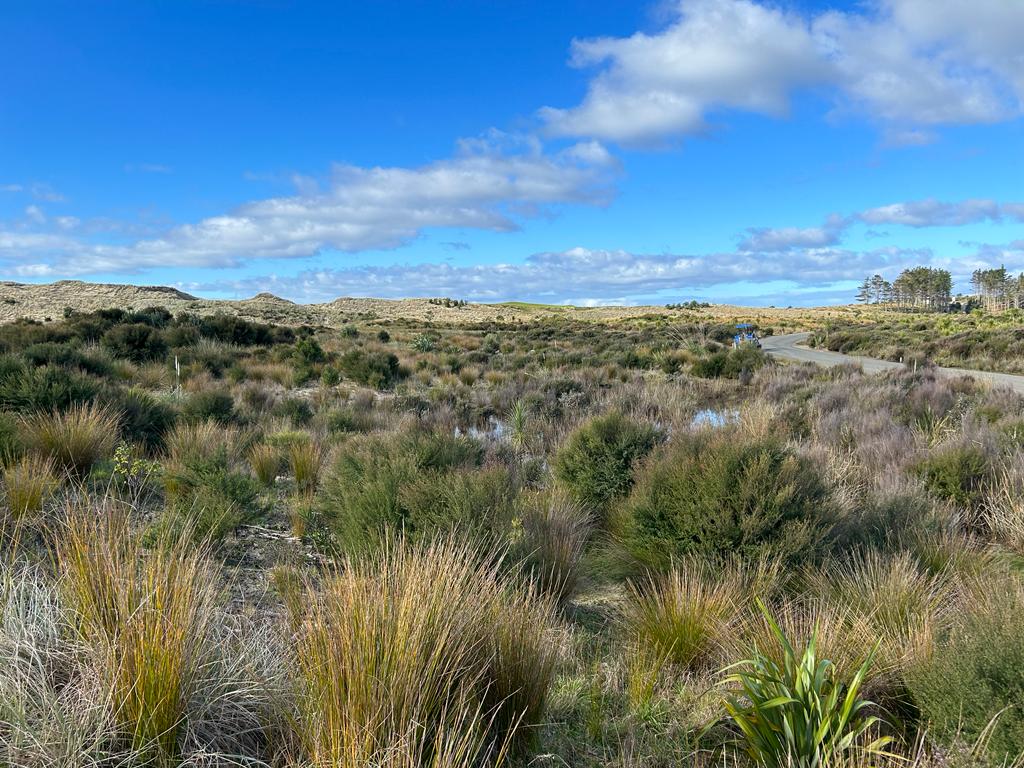
Kyle, one of Rural Design’s ecologists, was lucky enough to have the opportunity to participate in a herpetofauna survey of the area as a part of a long-term research collaboration by Massey University and the Shorebirds Trust. The work itself is lead by Alex Flavell-Johnson, the Conservation Manager at Tara Iti and involves baiting, checking and rebaiting an extensive grid of pitfall traps throughout the wider area, as well as checking under Artificial Cover Objects (ACOs) for the presence or absence of herpetofauna species. The pitfall traps themselves are small buckets dug ~ 30 cm into the ground, which is baited with an irresistible spread of peach puree and cat food, and then covered with a plastic plate which is elevated ~1cm from the ground. The traps have bits of wood placed in them to provide shelter for any captive herp, and holes are drilled into the bottoms of the buckets to let water freely drain from them. ACOs are corrugated sheets of roofing which provides warm refuge for resident lizards and skinks. If a gecko or skink was caught, several body measurements are recorded including head length, tail length and weight. This survey is conducted biannually over an intensive 10-day spurt – rain or shine.
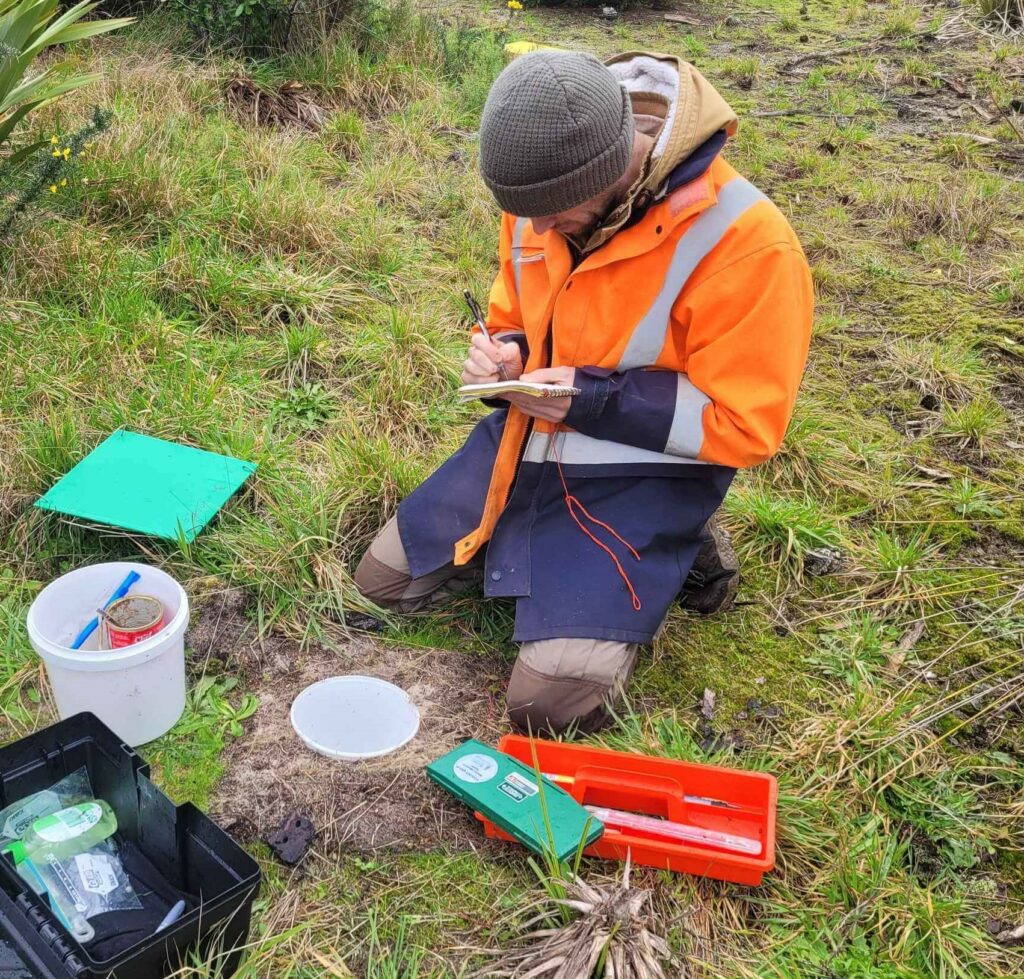
It was interesting to compare the biodiversity of species throughout the different various ecotypes seen at Tara Iti which included exotic pine forest, seaward facing foredune, semi-stable mid-dune and recently replanted backdune ecosystems. As expected, plague skinks (Lampropholis delicata) were the most commonly caught species, though excitingly, some ‘At Risk – Declining’ shore skink (Oligosoma smithi) were also observed. Interesting bycatch included an abundance of invertebrates, as well as some native ‘At Risk – Relict’ vagrant spiders (Uliodon spp.), cave wētā (Pachyrhamma acanthocerum) and ‘At Risk – Declining’ katipō spiders (Latrodectus katipo).
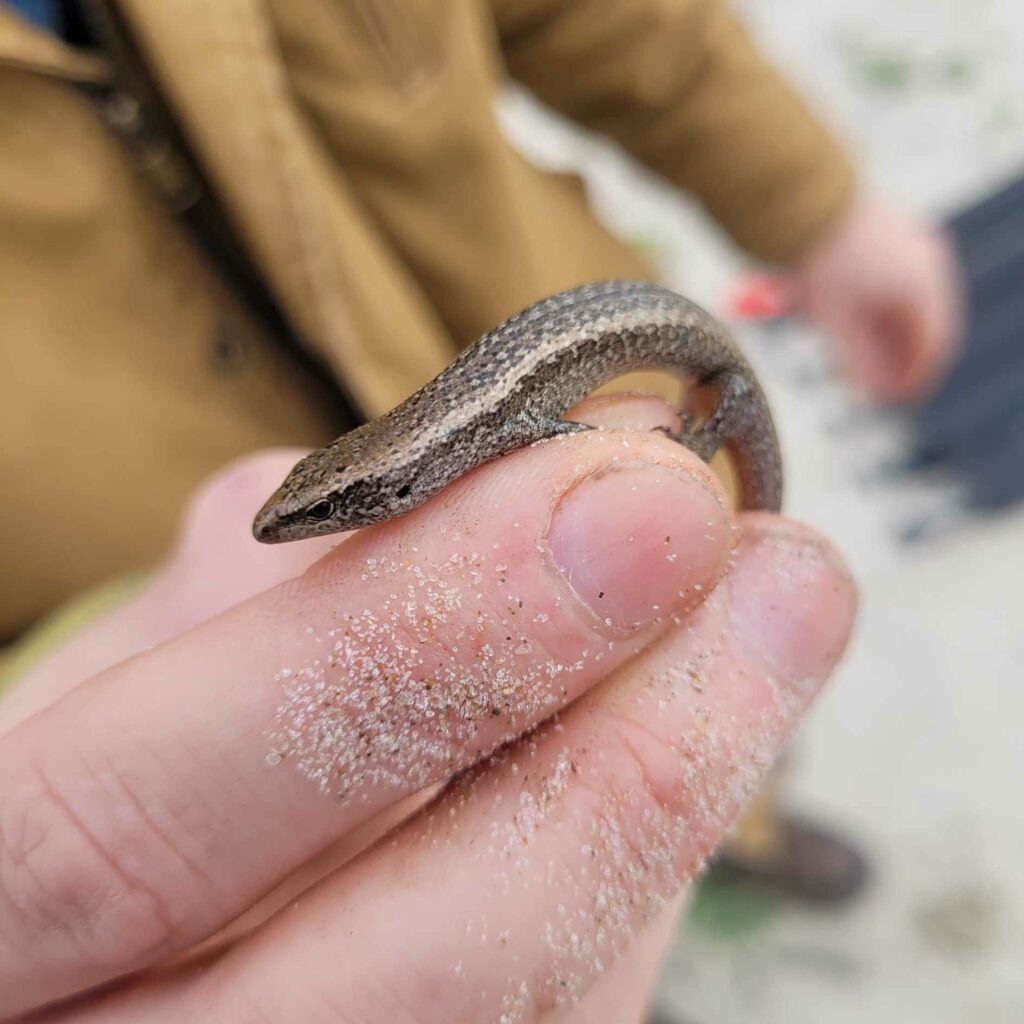
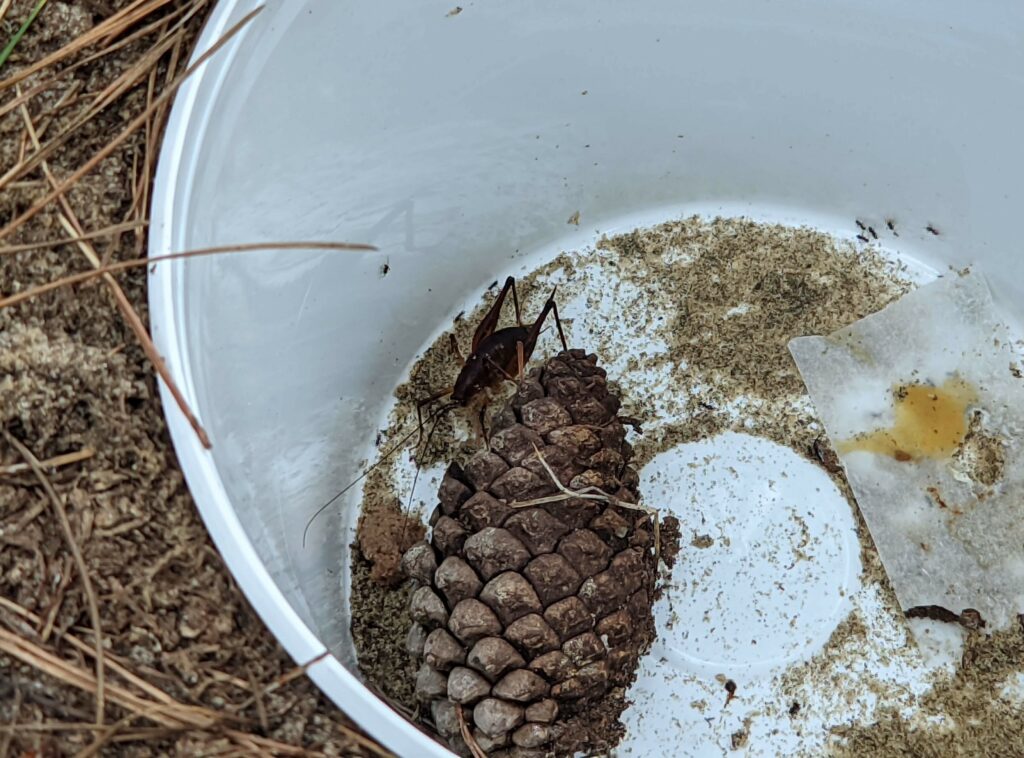
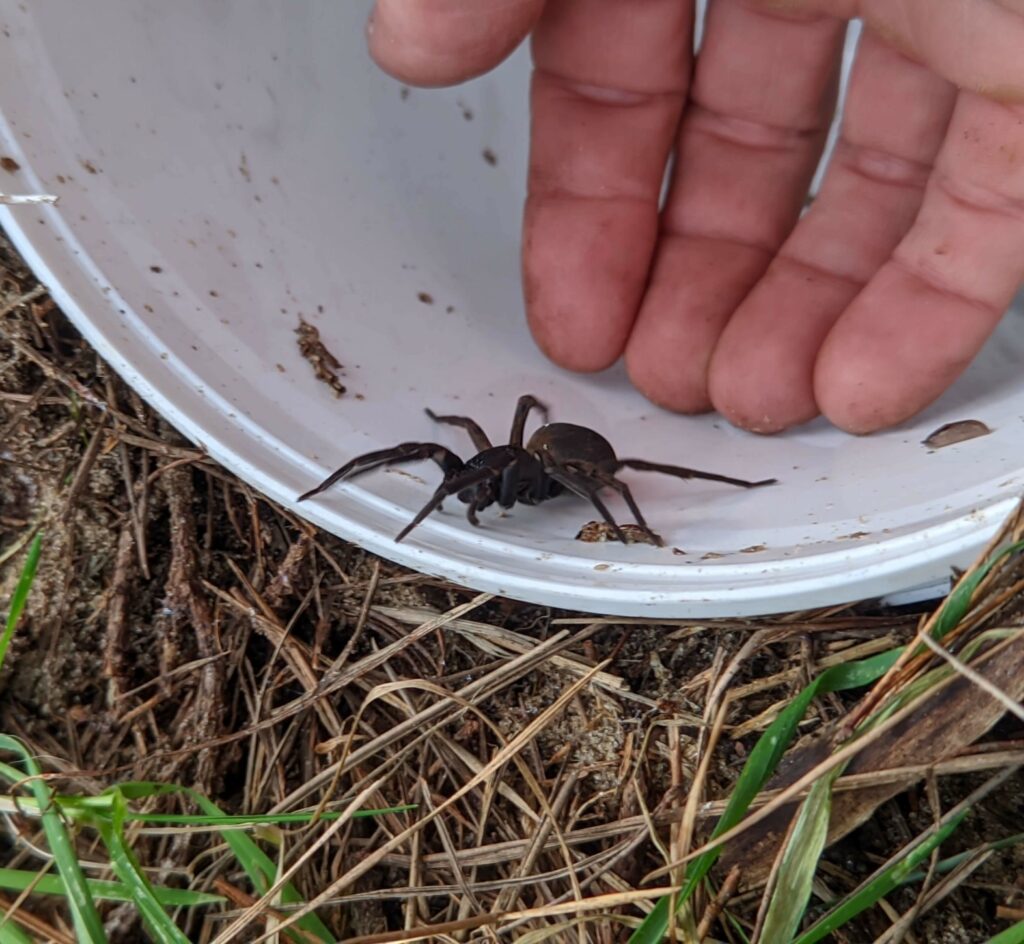
This survey data is incredibly important as it provides the baseline dataset to compare early onset herpetofauna abundance and biodiversity following the reestablishment of native plants to a coastal dune system. With this data, ecologists will be able to monitor and measure the abundance and diversity of native herpetofauna as Rural Design’s revegetation planting continues to establish and mature. As Rural Design continues their revegetation work alongside Tara Iti’s conservation programme, we should see an increase in the presence and biodiversity of native fauna in the coastal dunelands.
